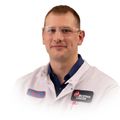
Looking under the Hood and Getting Started with the Optima AUC
-
Akash Bhattacharya, PhD
Senior Application Engineer, Beckman Coulter Life SciencesBIOGRAPHY -
Ross VerHeul
Senior Applications Scientist - Beckman CoulterBIOGRAPHY
DATE: October 1, 2019
TIME: 8:00am PT
In the previous webinar, Introduction to Characterization of Biomolecules Using Analytical Ultracentrifugation, we discussed the fundamentals of analytical ultracentrifugation and looked at a few sample applications. In this webinar, we explore the operational aspects of this biophysical technique. We will start off with an overview of the technology behind AUC, taking a close look at the two types of detection apparatus offered on the current generation Optima AUC: absorbance and interference. We also look at the improvements offered by the Optima AUC over the previous generation ProteomeLab. Then, we go through some of the steps involved in choosing suitable parameters when planning an experiment on a new sample – including the use of simulation tools available in analysis software packages. We also look at the effect of rotor speed on simulated scan data for two antibody fragments. We learn how to identify incomplete sedimentation, lack of separation between two analytes, and the tradeoffs between rotor speed, number of scans, and experiment duration. We then study improvements in data resolution with increasing rotor speed using simulated data for a typical gene therapy analyte. Finally, we move to instrument control and look at the steps involved in setting up a new experiment, viewing live scans, and transferring data after experiment completion.
Learning Objectives:
- Learn the technical advancements of the Optima AUC and the difference between absorbance and interference mode detection.
- Learn how to design a new experiment in the Optima AUC.
- Learn how to transfer data after an experiment.
- Learn how to use available simulation tools to model scans for a two-analyte system.
Watch the previous webinar on demand here.
Webinars will be available for unlimited on-demand viewing after live event.
LabRoots is approved as a provider of continuing education programs in the clinical laboratory sciences by the ASCLS P.A.C.E. ® Program. By attending this webinar, you can earn 1 Continuing Education credit once you have viewed the webinar in its entirety.
Looking under the Hood and Getting Started with the Optima AUC
Please update your information
Certificate of Attendance
DOWNLOAD CERTIFICATE





